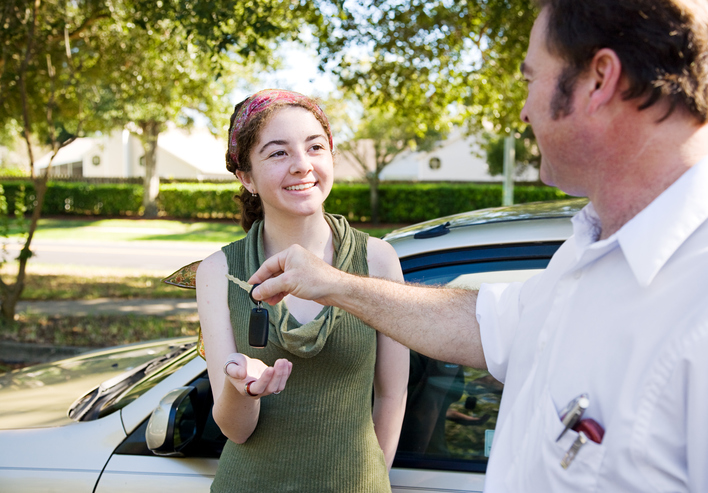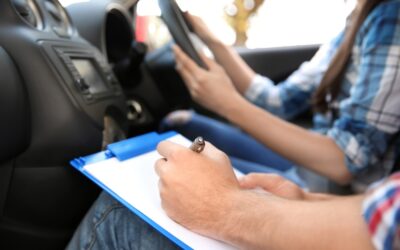Like many other learner drivers, you might be thinking about getting your own car, or becoming insured on your parents’ car before passing your test. Learners who practice outside of their lessons typically have a better pass rate, and are safer drivers once passing their tests. If you have your own car, you can even start building your no claims discount before you pass your test. Before venturing out without a driving instructor though, you must make sure you are aware of the learner driver rules that will apply to you.

What you can do
You might be surprised to hear that, unlike some other countries, in the UK there are very few restrictions on learner drivers.
No time restrictions
There are no time limits for driving, so you can go out and practice as much as you like, at any time of day, whether it’s light or dark, busy or quiet. If your driving instructor only offers lessons during the day, or you are taking evening lessons to fit around college, university or work, making time to practice in different conditions to those you are used to can help prepare you for driving once you’ve passed.
Drive on any roads, except motorways
With the exception of motorways, you can drive on any road your vehicle is permitted to, including dual carriageways with 70 mph speed limits. In Great Britain, the same speed limit applies to all drivers, including learners. In Northern Ireland, however, learners are restricted to a maximum of 45 mph, even on roads with higher speed limits.
Bring passengers
Although you must have somebody suitable supervising you while learning to drive, there are no restrictions on who else you can have in your car with you. This means that if you are struggling to make time to go out and practice driving, you can do it on a journey you would’ve been taking anyway, even if this means you have the whole family in tow. Although there are restrictions on what makes somebody suitable to accompany you as a supervisor, there are no age limits on your additional passengers, so they could be your parents, grandparents or friends.
Drive any car
Unlike motorcycles, where what you can ride depends on your age and experience, there are no such restrictions when you are learning to drive a car. Providing the vehicle is roadworthy and that you have insurance, permission, and a suitable supervisor, you can learn to drive in a car of any size.
You can’t generally drive anything bigger than a car on a provisional licence. There some exceptions to this, such as certain agricultural vehicles, however, if you plan on driving a car, this is the best thing to practice in.
Drive your own car
You do not need to have passed your driving test to own a car, so providing you have appropriate insurance and a suitable supervisor, there is nothing to stop you from driving your own car. Your supervisor may be covered by their own insurance policy, however, you will probably want the reassurance of having them named on your policy, should they have to take control of the vehicle at any point.
Take responsibility
If you are involved in an accident, or commit a driving offence, you can be penalised with a fine and points on your licence, just as you would once you have passed your test. Although your supervisor is there to help guide you, you are the one ultimately in control of the vehicle. Similarly, if you park somewhere you shouldn’t, you won’t be let off a parking ticket just because you’re a learner.
What you can’t do
Learner drivers aren’t exempt from the rules that qualified drivers have to obey, so you will have to make sure you have a taxed, road-worthy car that you are insured to drive as a learner driver. Although you won’t have your full licence yet, you will need to have a valid provisional licence before you go out on the road.
Drive Alone
As a learner, you cannot drive alone. You must be accompanied by a qualified driver, who is aged at least 21 and has held a full driving licence for at least three years. A supervisor is also considered to be in control of the vehicle, so there are [rules that apply to them too] (link to ‘Supervising a Learner Driver blog), for example, they can’t be over the drink drive limit, or use a handheld mobile phone while accompanying you.
Drive without L Plates
You can’t drive a car unless you are displaying “L” plates, on both the front and rear of the vehicle. And did you know that in Wales, “D” plates are sometimes used instead of “L” plates. The D stands for Dysgwr, Welsh for “learner”.
Drive on Motorways
Although you can use dual carriageways with 70mph speed limits, learner drivers are not permitted to use motorways, so you will have to avoid these until you pass your test.
Learning to drive is an exciting time but all the new rules and extra information you are taking on can feel overwhelming at times. Take plenty of time to familiarise yourself with what you can and can’t do as a learner driver and if you’re not sure, just check it out online! Rules change and sometimes you’ll get advice from friends or family that doesn’t apply to you, so make sure to check out the facts for yourself. Insurance in particular is likely to be very new to you and insurance for learner drivers (and new drivers) is often different from that of experienced drivers, so take some time to read through your learner driver policy and find the right one for you.



